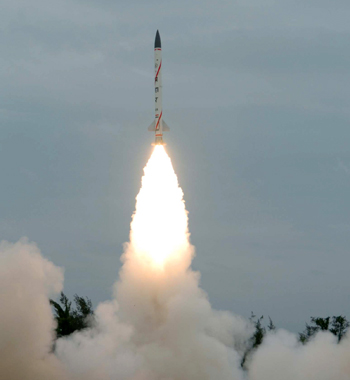INDIAN ARMED FORCES CHIEFS ON OUR RELENTLESS AND FOCUSED PUBLISHING EFFORTS

The insightful articles, inspiring narrations and analytical perspectives presented by the Editorial Team, establish an alluring connect with the reader. My compliments and best wishes to SP Guide Publications.

"Over the past 60 years, the growth of SP Guide Publications has mirrored the rising stature of Indian Navy. Its well-researched and informative magazines on Defence and Aerospace sector have served to shape an educated opinion of our military personnel, policy makers and the public alike. I wish SP's Publication team continued success, fair winds and following seas in all future endeavour!"

Since, its inception in 1964, SP Guide Publications has consistently demonstrated commitment to high-quality journalism in the aerospace and defence sectors, earning a well-deserved reputation as Asia's largest media house in this domain. I wish SP Guide Publications continued success in its pursuit of excellence.
- MoD initiates comprehensive review of Defence Acquisition Procedure 2020, pushes for defence reforms
- G7: The Swansong
- Kalinga Connect: South Asia to Polynesia
- Must Credit DRDO for Operation Sindoor, now what is next for defence R&D?
- The layered Air Defence systems that worked superbly, the key element of Operation Sindoor
- Operation Sindoor | Day 2 DGMOs Briefing
- Operation Sindoor: Resolute yet Restrained
Indigenous K-4 and Pranash Missiles
 |
The Author is Former Director General of Information Systems and A Special Forces Veteran, Indian Army |

On January 19, 2020 India successfully tested the indigenous K-4 missile of Vizag coast. K-4 is a nuclear capable Intermediate-range submarine-launched ballistic missile developed by the DRDO to arm the Arihant-class submarines. The missile has a maximum range of 3500 km. The missile was fired off a pontoon between 12 noon and 1 pm off the Vizag coast in Andhra Pradesh and the delivery platform was tracked over 1,500 km before it shifted to ship-based radars. The missile met all its classified mission objectives. Developmental testing of K-4 missile commenced in January 2010, when the missile successfully ejected from a pontoon submerged 50 meters below the surface of water and breached the surface.
The first test from a pontoon submerged more than 20 meters below the surface of water was carried out on March 24, 2014 successfully and the missile tested to a range of 3,000 km. Ejecting from the pontoon submerged off the Vizag coast, the missile rose into the air, took a turn towards the designated target, sped across 3,000 km in the sky and dropped into the Indian Ocean. The K-4 was again tested from a submerged platform on March 7, 2016. On March 31, 2016, the K-4 was successfully tested from INS Arihant at sea – 45 nautical miles off Vizag. With a dummy load, the K-4 launched from the submarine in full operational configuration was fired from 20-meter deep and covered more than 700 km before zeroing on the target with high accuracy. On December 17 2017, an attempt to launch K-4 missile was unsuccessful because of a discharged battery. The next development trial of the K-4 was planned in November 2019 but was postponed due to unfavorable weather conditions caused Cyclone Bulbul. This was then carried out on January 19, 2020 with full operational configuration during which the missile traversed a distance of over 3,500 km in about 21 minutes, achieving a near-zero circular error of probability (CEP). This was followed by the final development test on January 24, 2020 which was equally successful. With this, the K-4 missile is ready for serial production. The CEP of the K-4 carrying a nuclear warhead of over one ton is far lower than that of Chinese ballistic missiles. Only the US, Russia and China have submarine-launched ballistic (SLBMs) of 3,500 km range.
The INS Arihant is already equipped with a 700 km range B-02 nuclear missile. The January 2020 K-4 missile tests were conducted in presence of representatives of the Strategic Forces Command (SFC). India's second nuclear submarine INS 'Arighat' is on the way to become operational. The K-4 missiles equipping the Arihant class nuclear submarines will boost the punch of the SFC to great extent. India's Agni series of nuclear-capable ballistic missiles can hit targets at different ranges between 700 km and 5,500 km. DRDO's short-range Prithvi series of missiles with ranges of 150 to 350 km too are nuclear-capable.
The DRDO is now developing a new tactical ballistic missile 'Pranash' with a strike range of 200 km. The new weapon traces its origin to the 'Prahaar' missile developed by the DRDO. The Prahaar has a range of 150 km but the army wanted a weapon with a better range, which is why Pranash is being developed. A DRDO official told media at the DefExpo 2020, "The configuration of Pranash has been frozen and development trials will begin by 2021-end. We will be in a position to offer it for user trials in two years. The army wants a missile with a range in the region of 200 km". The non-nuclear Pranash missile will be propelled by a single-stage solid propellant engine. According to a DRDO official, "It (Pranash) will be one of the cheapest missiles in the world in its range category. Also, the missile is outside the purview of the Missile Technology Control Regime (MTCR), which places export restrictions on missiles with ranges of more than 300 km". Inaugurating DefExpo 2020 on February 5, 2020 Prime Minister Narendra Modi had said that defence exports should double in next five years – the country's target was to clocks exports worth 35,000 crore in the next five years. Modi said that India had exported military hardware worth 17,000 crore during the last two years, compared to 2,000 crore in 2014. Increasing weapons exports is a top priority for the government. The draft Defence Production Policy released in March 2018 had visualized India as one of the top five countries in the aerospace and defence sectors in the coming years.





